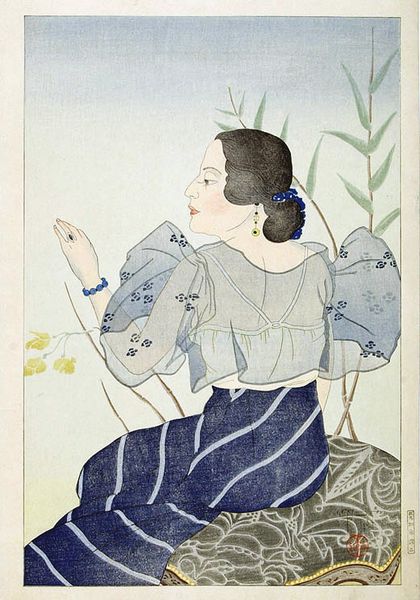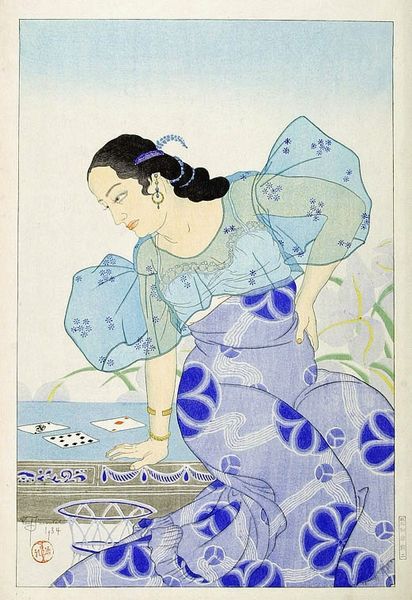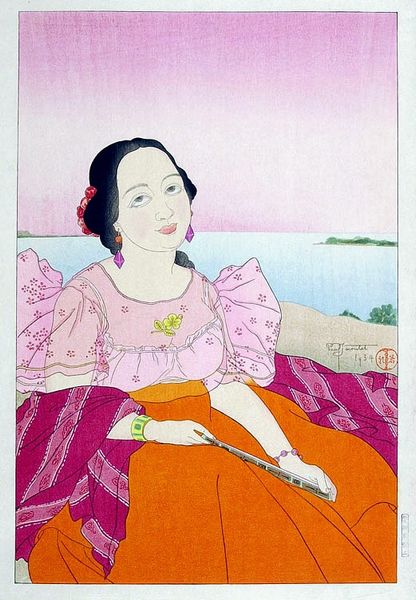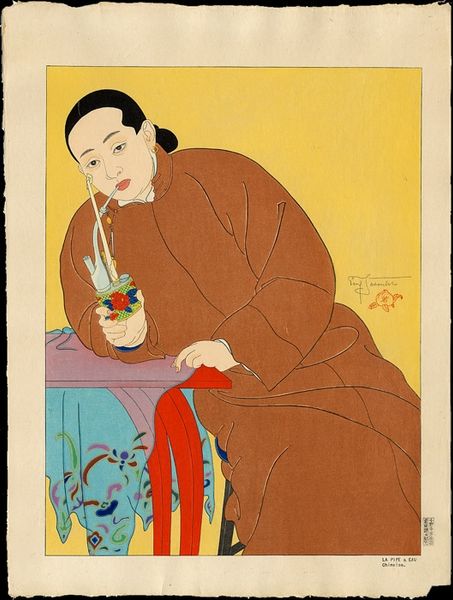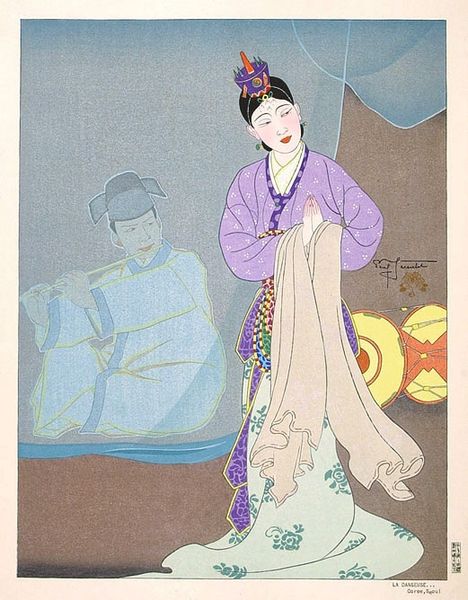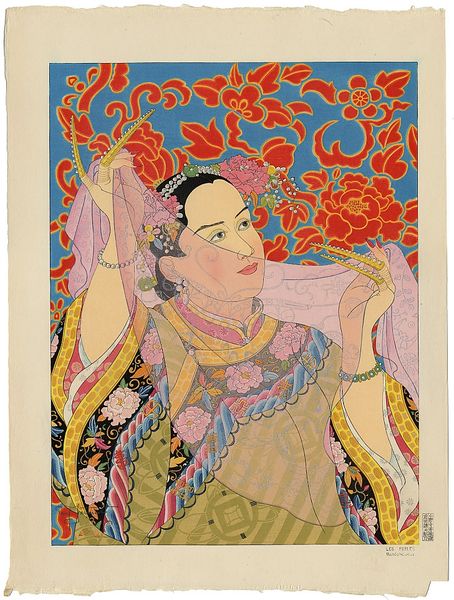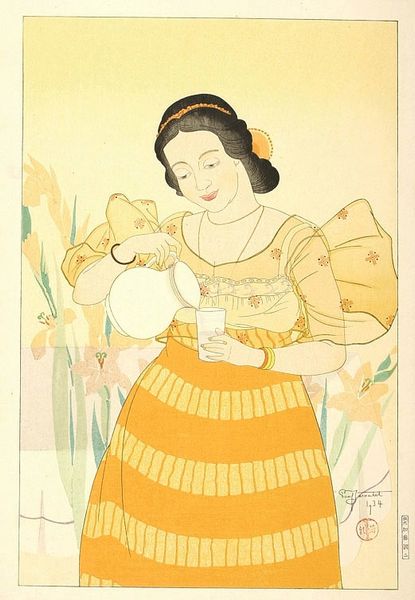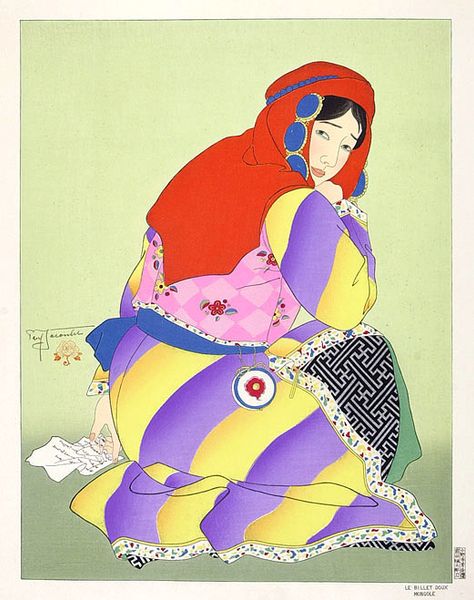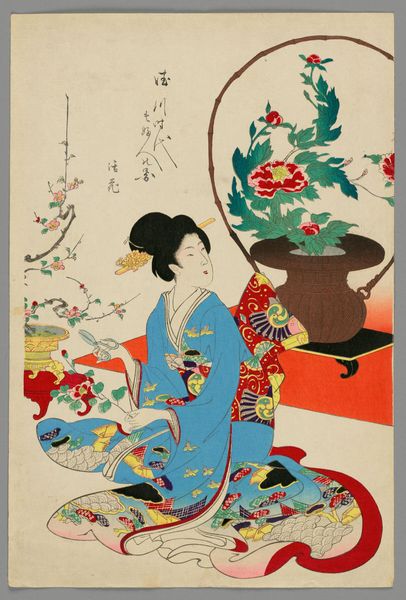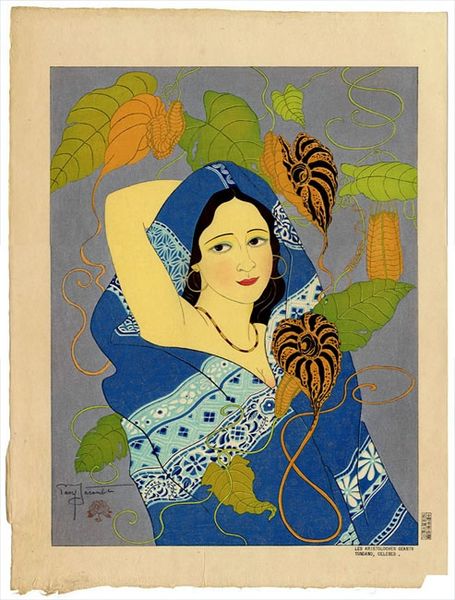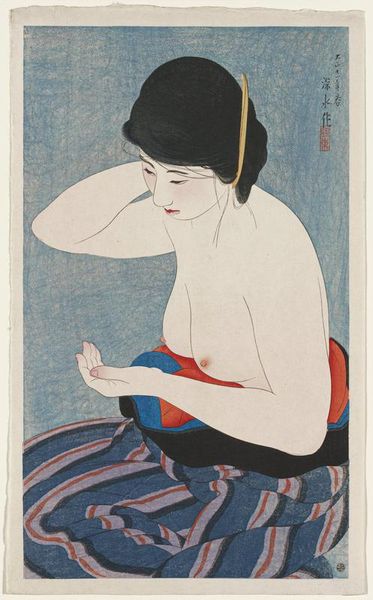
Copyright: Public domain Japan
Curator: Paul Jacoulet’s "Portrait of a Chamorro Woman - Green," created in 1934, is an exquisite color woodblock print. It immediately evokes a feeling of serene composure. What stands out most to you upon first glance? Editor: The balance. There's something fascinating about how Jacoulet used flat color to create depth and form, especially the woman's elaborate patterned skirt, almost flattening pictorial space in a distinctly postmodern manner. Curator: It's worth situating Jacoulet within a historical context—his positionality as a French artist adopting Ukiyo-e traditions and portraying Pacific Islander women in the colonial era cannot be ignored. How might we analyze his representations in light of issues of gender, race, and power dynamics inherent in such encounters? Editor: Agreed, but note how expertly he merges Japanese printmaking techniques with Western portraiture. Look at the lines, the deliberate composition directing our gaze—the woman and her mirror occupying the core while naturalistic foliage provides the backdrop. It really masterfully guides the viewer. Curator: Absolutely, he’s meticulously controlling the viewing experience. We must also consider that he presents a very particular image of Chamorro women, possibly influenced by ethnographic expectations or romanticized visions prevalent at the time, creating an idealized version. The role of beauty standards is very significant here. Editor: From a technical standpoint, the print shows an exceptional dedication to color theory—green predominates, with blues, yellows and reds offering an aesthetic satisfaction as visual relationships unfold. Notice also the exquisite craftsmanship evident in the delicate rendering of details—the fine lines of her jewellery, the texture of her hair... Curator: So, we’re then compelled to consider whose stories are privileged, whose are erased, and how art becomes a powerful vehicle for either reinforcing or challenging the cultural status quo through subject, presentation, and, as you mention, craftsmanship. Editor: Ultimately, the convergence of traditional artistic techniques alongside more contemporary considerations in representation make the artwork very interesting. The questions it provokes seem as important as the aesthetic pleasure it provides. Curator: Indeed. I see "Portrait of a Chamorro Woman - Green" as more than just an aesthetically pleasing piece. It functions as a historical and social artifact, demanding further interpretation and contextualization through cultural dynamics.
Comments
No comments
Be the first to comment and join the conversation on the ultimate creative platform.
